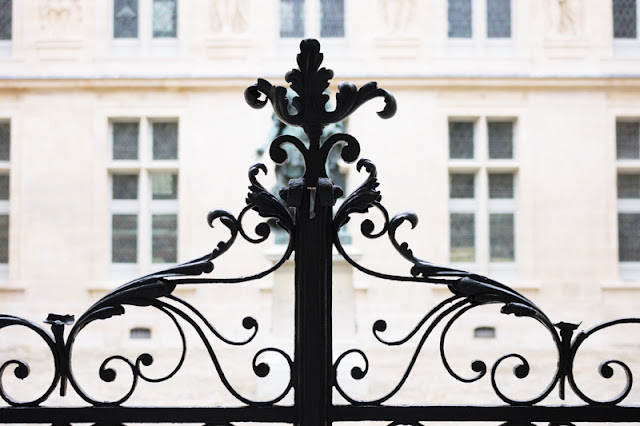Popular Architecture Styles in Paris Residences
The architecture in Paris is bast, massive. We can talk about the architecture of monuments, castles, palaces, churches, commerce, train and metro stations, and residences. And then the architecture goes from the medieval times to nowadays, isn’t that so amazing and overwelming?.
I have always been intrigued by the houses, facades and residences architecture in Paris, its variety and aesthetics, and here I compile the most popular architecture styles in houses and residences in a super mini blog post: the medieval style, the renaissance, the rustic and classical style, the neoclassisism, and the Haussman style in the Restoration; and I stoped there because the repliques of La Belle Epoque are so few and then it comes the modern and contemporary architecture.
 |
| Hotel Carnavalet, Paris |
So, to begin, medieval houses in Paris are not that common, I think they are just in the Marais, and they are ew. The ordinary Paris house of the Renaissance was little changed from the medieval house; they were four to five stories high, narrow, built on a stone foundation of wood covered with plaster. They usually had a pigeon, or gabled roof. I found these houses very charming between all the rest of the elaborated Parisian architecture.
 |
| Medieval Houe at le Marais |
Once the French court returned to Paris from the Loire Valley in the 16th century, the nobility and wealthy merchants began to build hôtels particuliers, or large private residences, mostly in the Marais. They were built of stone and richly decorated with sculpture. They were usually built around a courtyard, and separated from the street. The residence was a located between the courtyard and garden. The façade facing the courtyard had the most sculptural decoration; the façade facing the garden was usually rough stone. The Hôtel Carnavalet at le Marais (1547–1549) is the best example of a Renaissance residence.
 |
| Hotel Carnavalet |
Then in the 17th century an elegant new form of domestic architecture, the rustic style, appeared in Paris in the wealthy Le Marais. This style of architecture was usually used for ornate apartments in wealthy areas, and for Hôtel Particuliers. It was sometimes called the "style of three crayons" because it used three colors; black slate tiles, red brick, and white stone. This architecture was expensive, having a variety of different materials, and ornate stone work. The most famous examples found around the Place des Vosges, built between 1605 and 1612. Other examples of this are in the Place Dauphine.
 |
| Place des Vosges |
 |
| Rustic Style |
In the neoclasissism, the Regency and then the rule of Louis XV saw a gradual evolution of the style of the hôtel particular, or mansion. The ornate wrought-iron balcony appeared on residences, along with other ornamental details called rocaille or rococo, often borrowed from Italy. The style first appeared on houses in the Marais, then in the neighborhoods of Saint-Honoré and Saint-Germain, where larger building lots were available. These became the most fashionable neighborhoods by the end of the 18th century. The new hôtels were often ornamented with curve façades, rotundas and lateral pavilions, and had their façades decorated with sculpted mascarons fruit, cascades of trophies and other sculptural decoration.
During the Restoration, 1815 - 1830, new residential neighborhoods were built on the Right Bank. The typical new residential building was four to five stories high, with an attic roof sloping forty-five degrees, broken by five to seven windows, Haussman style, a balcony in the second and in the fifth floor. The decoration was largely adapted from that of the Rue de Rivoli; horizontal rather than vertical orders, and simpler decoration. The windows were larger and occupied a larger portion of the façades. Decoration was provided by ornamental iron shutters and then wrought-iron balconies. Variations of this model were the standard on Paris boulevards until the Second Empire.
I think these are the four or five most popular architectonical styles that you can find in the residenss and houses in Paris: the medioeval hoses, the renaissance residences (classicism), the rustic style of the 17th century, the neoclassical mansions with ultra ornate balconies and sculptures, and the Haussman style with their inclined rooftops, and balconies in the second andfifth floors, the of course many construction styles were merged specially between the Haussmann style and the neoclassical. My favourite is of course the neoclassical style that incorporation of the ornate iron balconies and sculpture was one of the many genius ideas of Luois XV.
All photographs by Caroline Mint






Comments
Post a Comment